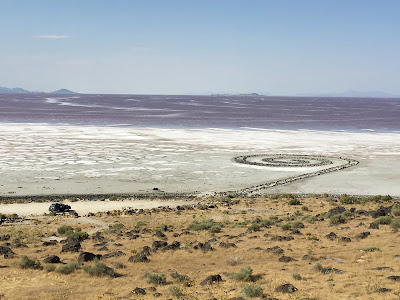The next morning, I drove back down to the river with my bike and rode up and downstream on the nice system of bike paths. Just like all the other early morning rides on this trip, it was an awfully pleasant way to get some exercise.
Downstream from Boise itself, Garden City seems to be positioning itself as a destination for recreation and entertainment along the river, although it looks much of that may still be in the future. The highlight on this early Sunday morning was the line up of guys with surf boards waiting to take their turn surfing the standing wave below the small dam! Only a couple that I saw were even able to get up - most washed out as soon as they tried to enter the treadmill.
From here, it's just a long 500-mile day from Seattle - we pulled up to the house around 5:30. This is the final post from "Road Trip 2017," unless I decide to pull together some sort of summary (25 blog posts, 21 days, 6200 miles, 10 bike rides, and so forth).



















































